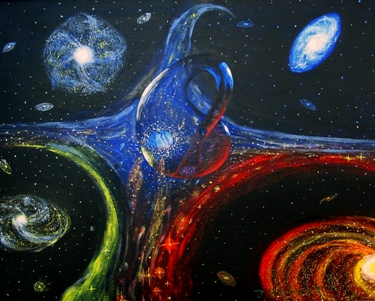Chapter 0-Page 0

Most of the gas cloud spins, and the stuff in the arms falls through the spinning gas. Collisions between the spinning particles and the falling particles cause the arms to take on the spiral form. The arms sticking out of the cloud perpendicular to the spin of the gas probably fall into the center. They lose their shape and are absorbed suggesting that the most-likely spiral galaxies have four arms left, still enough for a good game of ping-pong.
Appendix A: 04 Continuous Origins.
Kapp estimates new galaxies start forming among existing galaxies that are about three and a half billion years old. He thinks major radiation will eject from those empty areas as the arms pour into the center. If a radio telescope discovered this implosion, we'd have strong evidence of matter coming into existence as described.
Stars also form from gas clouds, so the above description explains why stars spin.
Temporary matter can explain stars and galaxies quite well.
HOW TO FORM PLANETS
This section will tell how to cook up a planetary system if matter doesn't last forever. The complete, logical steps take many pages in Towards a Unified Cosmology, but the explanation is so fascinating it would be a shame to leave it out altogether. Just follow this recipe:
- Start with two stars revolving around each other. Use one of the other common binary-star systems in our galaxy as a model if you want.
Chapter 0-Page 0
